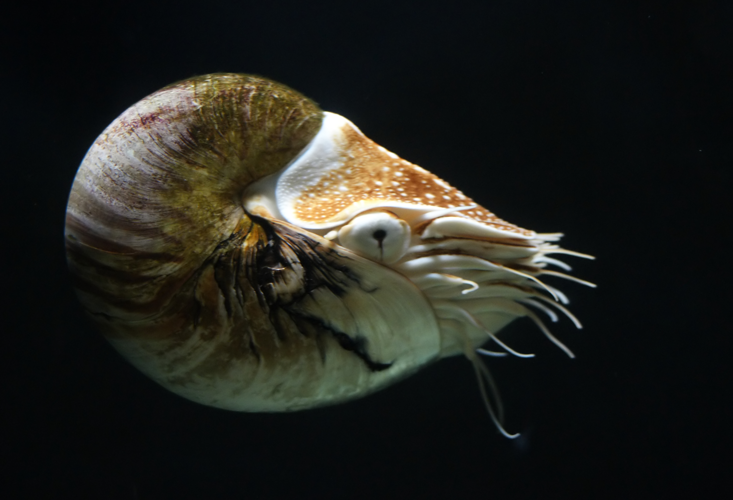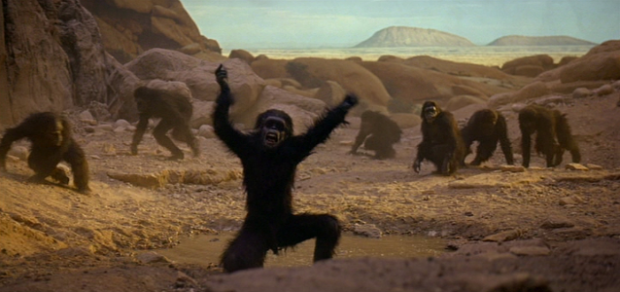If I have one big idea it is that
one can understand Platonic and Aristotelian ontology and metaphysics better
(or perhaps at all) by comparing them with modern evolutionary biology and vice
versa. I think I began to understand
Aristotle much better, after decades of reading the Physics and the Metaphysics,
when I realized that many contemporary debates in the philosophy of biology were
recapitulating problems already present in Aristotle.
Two days ago, I grabbed a book
off my self on the way to the toilet. Some
of my biological processes seem to require reading material. Darwinism and Philosophy [ed. Vittorio
Hösle and Christian Illies (2005)] included an essay by Michael T. Ghiselin. The latter is most famous for his answer to one
of the great questions of modern biology: what is a species? Is it a natural kind, like oxygen in the
periodic table of elements? Is it a
group of (potentially) interbreeding organisms like elk? Is it merely a customary grouping, like red
pieces of laundry? Each of these answers
has its proponents.
Ghiselin’s answer is that a
species in an individual. If that makes
no obvious sense, you are in good company.
It made no sense to me until, sitting on porcelain and doing God’s work,
I realized that Aristotle had joined the conversation. By the time I finished the paperwork and returned
to my desk, I was convinced that I understood Ghiselin’s argument and I was
convinced that he was right.
An individual is something that
is located in space and time and, for that reason, has a history. The Garmin fitness tracker on my left wrist
is an individual; this one is mine, not somebody else’s. The same is true of my wrist and me. I had a beginning in time and my being traces
a continuous path from that time and place to now. The same is true of Homo neanderthalensis. That species had a beginning, spread out across
portions of the globe, and came to an end.
Natural kinds are not located in
time and space the same way. Gold is gold
wherever it occurs, whether it was dug up in California or discovered on Mars
or produced in a supercollider. As
opposed to individual lumps of gold, gold has no history; it has only essential
properties.
Aristotle covered this same
ground. There are things that have properties-horses
for example-and there are the properties that
such things have-shape, weight, and species
forms. The things that have properties
would seem to be the things that are real.
A horse can change color (age happens, even to Seabiscuit) and yet
remain a horse; its color exists on in the horse and the color ceases to exist
when the color has changed.
This suggests one answer to the
question: what is most genuinely real?
For the purposes of biology, at least, it is the individual
organism. From the horse one can
abstract downward to its properties (color and size), its matter (meat and
bone), and its parts (limbs and organs).
Likewise, one can abstract upwards to its species form, which links it
to the other horses. All of these are
abstractions because they exist only in analysis; they depend for their reality
on this here animal.
Aristotle might have rested with
this had he not inherited the central problem of Greek philosophy. What is most real should be what is most
knowable. It is not clear that I can
know anything about individual organisms.
Is she short or tall, young or old, alive or not. On the other hand, I can know that horses are
mammalian quadrupeds in a rather more secure way.
Ghiselin’s view that species are
individuals seems to address this problem.
If species are not eternal, they are not knowable in the same sense that
triangles are knowable. They are at least
more knowable that a particular horse. His
account points, however, toward a solution to the problem.
Ghiselin does not deny that the species
as natural kind account points to something real. The species horse is an emphatically real
thing: there are lots of horses. The
natural kinds horse, mammal, etc., are real in so far as horses really are
horses and mammals. He just insists that
natural kinds of this sort are properties of individual species.
A good indication that we are on
the right track is that our account to solve problems that once seemed too
difficult. I was raised, intellectually
speaking, in a hotbed of natural rights theorists. Under the guidance of Harry V. Jaffa, we took
the Declaration of Independence very seriously.
In that I have not wavered.
The Declaration speaks of the
Laws of Nature and of Nature’s God. Inferred
from such laws is the self-evident truth that all men are created equal in so
far as they enjoy certain unalienable rights.
Here I understand “men” to mean human beings. My colleagues who reject evolutionary biology
do so on the grounds that undermines confidence in the existence of a stable
human nature that can bear such properties as unalienable rights.
In the evolutionary scheme, species
seem to differ not in kind but only in degree.
For example, lions and tigers can mate and produce ligers, hybrids that
are not capable of having offspring.
This means that the two species share a large percentage of their DNA
but not enough to produce a lineage. So
lions and tigers differ, genetically, only in degree. Species as individuals emerged from common
ancestors and so differ only in their unique history and genomic families. From that point of view, the critics appear
to be correct.
Not so fast. Individual species also present real differences
in natural kind. A particular lion may
be so much a tiger, genetically speaking, and he may be bigger than more aggressive
than another male lion when he squares off on the field of reproductive
competition. He is, however, no more a
lion than any one of his competitors. Socrates,
Aristotle insists, is no more a man than any of his interlocutors.
To bring this back to the
Declaration, allow me to indulge in a little science fiction. Suppose we encounter living organisms on another
world. Assume that these organisms
emerged historically through the same evolutionary processes as life on
earth. We will find there no organisms
that belong to the same species as those on our planet, at least in Ghiselin’s
terms. None of those species will have a
common history with any of our species.
Yet the fact that we recognize them as living organisms means that they
do share something vitally important. The
living organism is a natural kind.
Now suppose that we encounter
Vulcans or something of that sort. Green
blood and distinct biological history notwithstanding, they are capable of
symbolic communication and moral responsibility. They can recognize mutual obligations between
themselves and us newcomers. They are
capable of making contracts. Are they “men”
as the Declaration means that term? Of
course.
Human beings are certain kinds of
beings. Our species has its unique
biological history, just as do individuals and populations of individuals
within that larger individual that is our species. While we are diverse in many respects, no son
or daughter of humankind is more an organism, or a mammal, or a human being
than any other. I find the distinction
between species as individuals and natural kinds to be worth thinking about.








